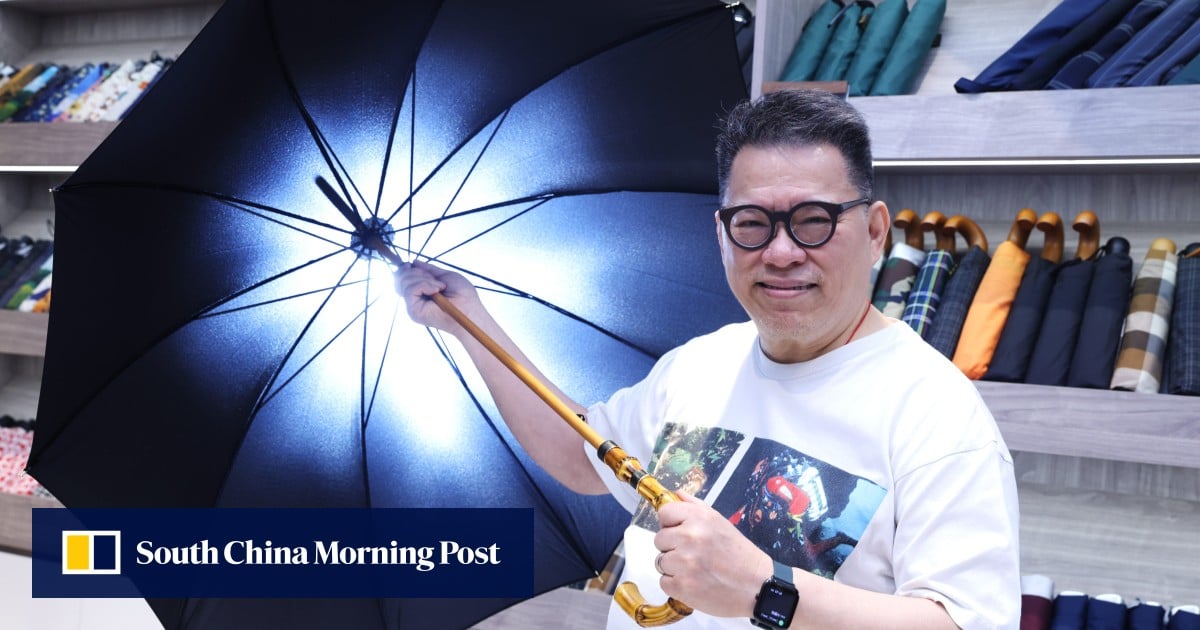It all began in 1885, when ragpicker and repairman Leung Chi-wah (also known as Leung So), who had been fixing European umbrellas for foreigners conducting business in Guangzhou, decided to make Western umbrellas himself using imported materials. He would eventually set up shop in a busier part of the city.
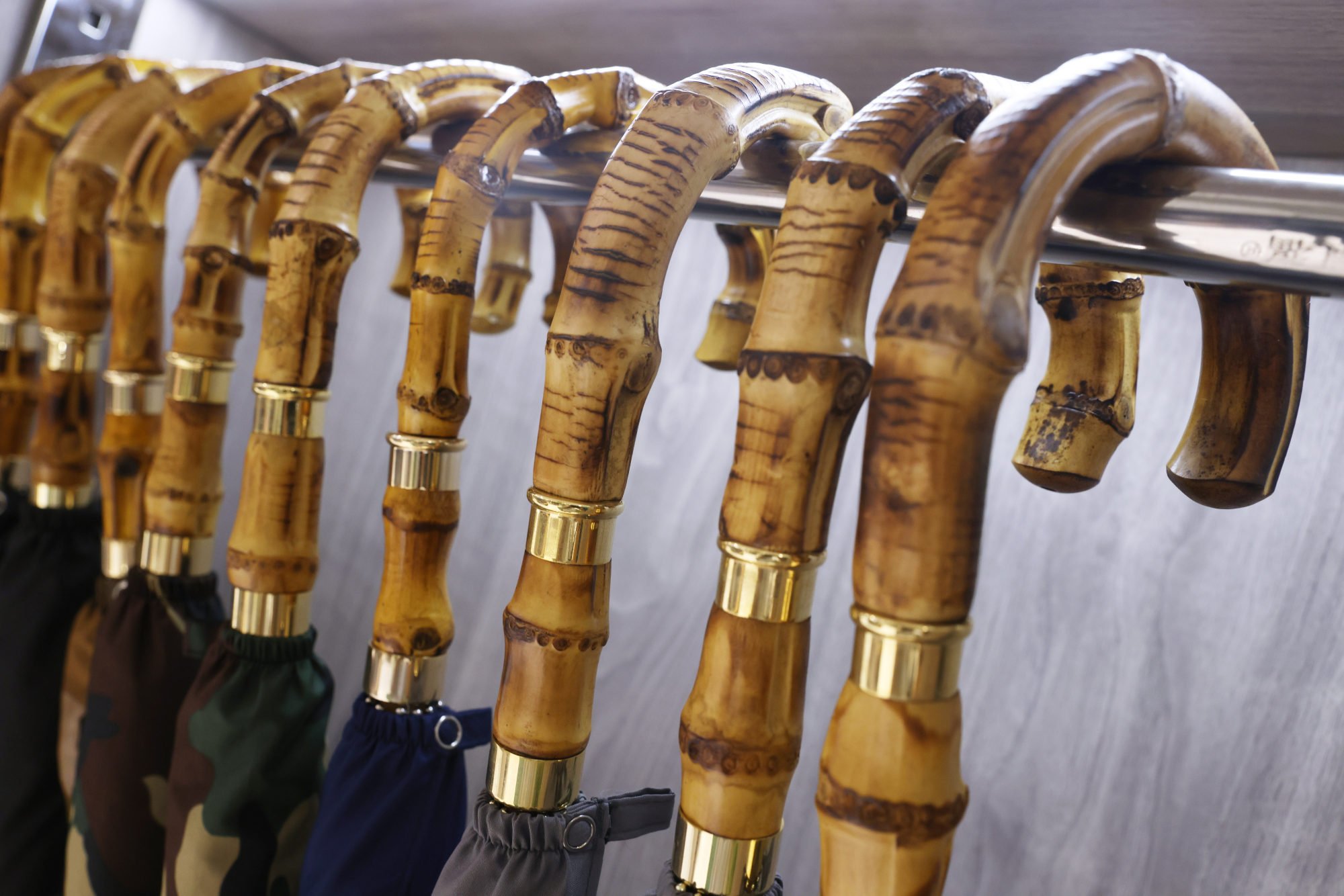
Back then, the Chinese used mostly oilpaper umbrellas – an art in themselves – but the bamboo frames were no match for the durability of steel.
“There was nearly zero competition – business was good and my great-grandfather had two stores in Guangzhou,” says Leung Chi-wah’s great-grandson, Leung Mang-sing, the fourth-generation owner of the business.
“Our umbrellas were a luxury not everyone could afford,” Leung adds. “My father said they were valuable enough to be pawned.”
In 1923, the Leungs moved to Macau because of political instability in mainland China at the time. In 1950, the entire family and business moved to Hong Kong.
“There wasn’t even the MTR yet in the early days when we dealt only in long, straight umbrellas in black and blue colours,” Leung says.
The story of Watsons: from licensed opium dealer to Asia’s biggest pharmacy
The story of Watsons: from licensed opium dealer to Asia’s biggest pharmacy
He describes how, in the 1960s, Japanese department stores came to Hong Kong bringing “pretty” umbrellas with them.
“This was quite a hit to our operation, so we began to assimilate printed fabric and fold frames to appeal to the market.”
Leung, who has headed the business since 1975, explains that the drier winter in Hong Kong is the off-season for umbrella sellers.
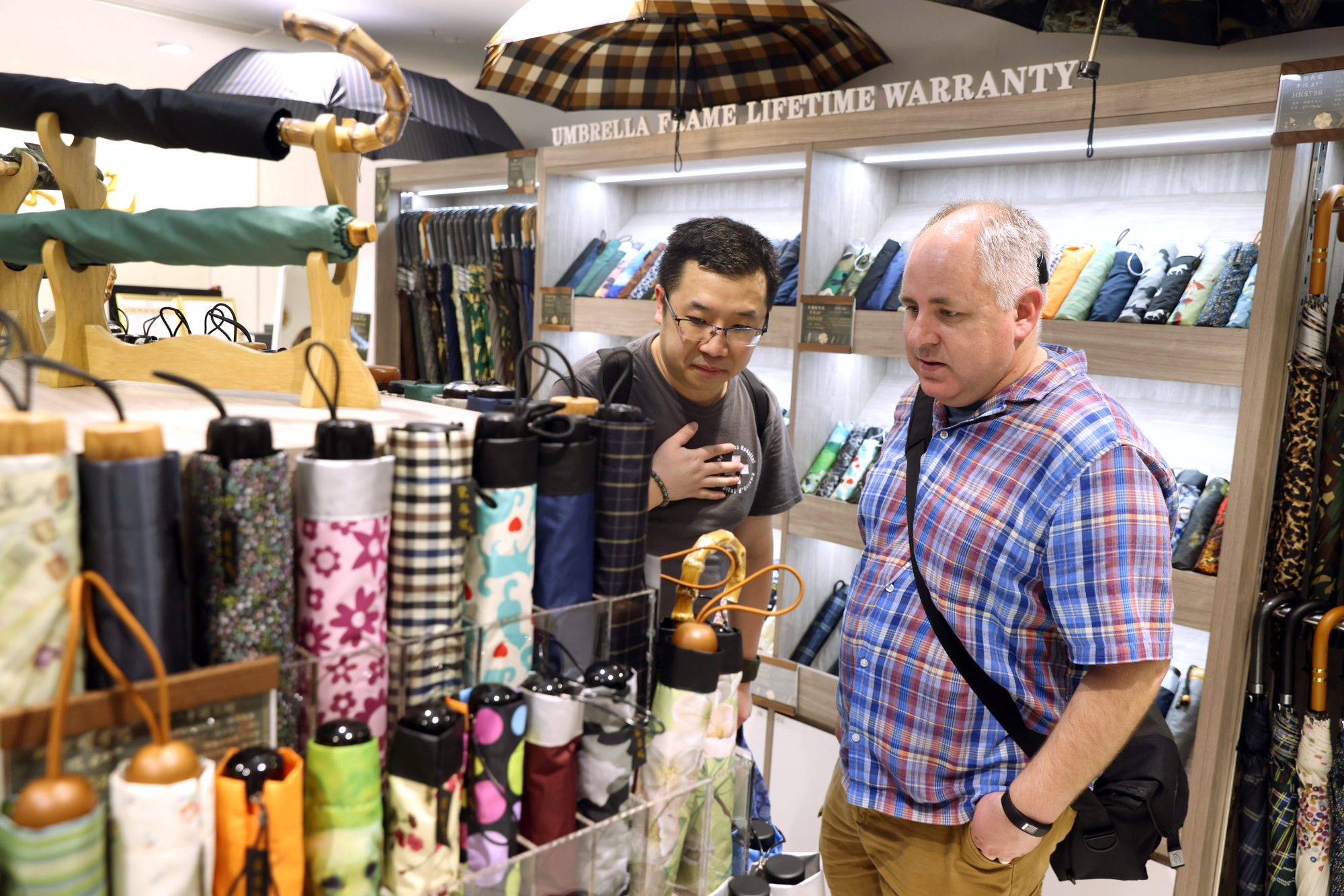
During this period, he prepares for the year to come. He usually looks into improving the production process by researching the latest products and sourcing new raw materials from around the world.
For example, about a decade ago, when Japanese factories started to mass-produce carbon fibre, Leung incorporated the material into the company’s umbrella frames.
“Steel is very sturdy, but it rusts even when you take preventative measures, especially in the nooks and crannies of the frame where moisture is retained. It’s inevitable over time. Carbon fibre isn’t metal, so it’s light and doesn’t rust. Still, many of our older customers prefer steel, which is way more classic.”
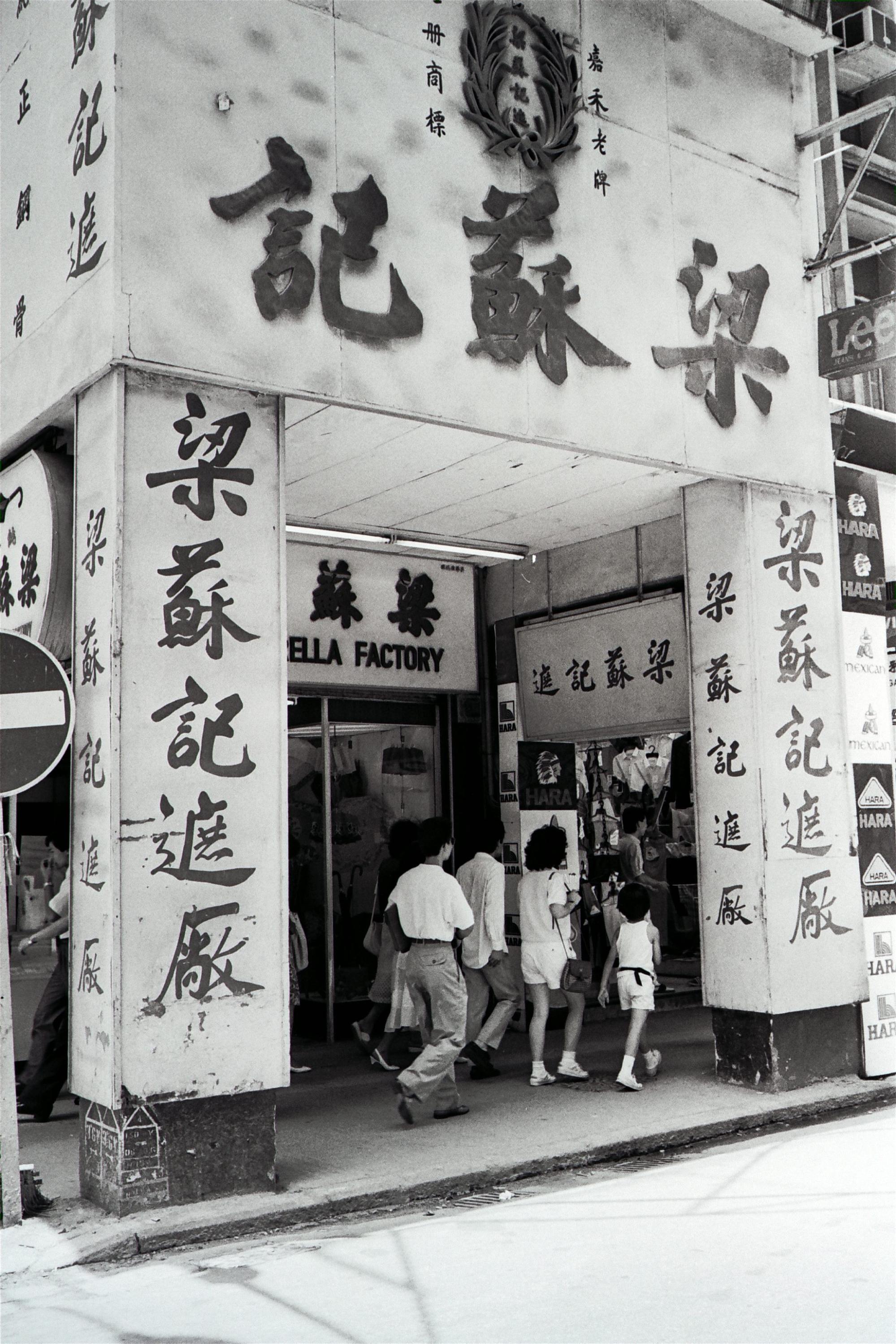
He says there was a time when wide and heavy umbrellas that were long-lasting were preferred, but consumers’ priorities have since shifted. Leung So Kee now offers umbrellas with UV-blocking fabric and lighter frames.
Currently, one of the store’s daintiest offerings weighs just 155g (0.3lb): a nine-inch-long (23cm) foldable carbon-fibre umbrella with a 20.5-inch radius. The heaviest is an extra-large golf umbrella, at 640g with a 33-inch radius.
There is also a wide variety of fabrics to pick from, with collections inspired by oil paintings, animal prints and flowers, to name just a few. Even among black-coloured fabrics, there are several different options.
There are much cheaper options out there … [but] our long-lasting umbrellas can be returned for repair and used again
At its peak, Leung So Kee had stores in Sham Shui Po, in Kowloon, and Tsuen Wan and Sha Tin, in the New Territories. Leung recalls there were “more hands, probably between 10 and 20”. Now, he counts about five to six makers, with a specialised sifu for repairs.
He says that during the business’ second generation, a Leung So Kee umbrella used to cost a month’s salary of a Chinese domestic helper (an amah). They have since become much more affordable, though the most premium option will still set a customer back HK$1,380 (US$180).
The price tag is well justified: for 139 years, the shop has used the slogan “pure steel frame, permanent warranty”. All of its umbrellas are eligible for free frame repairs.
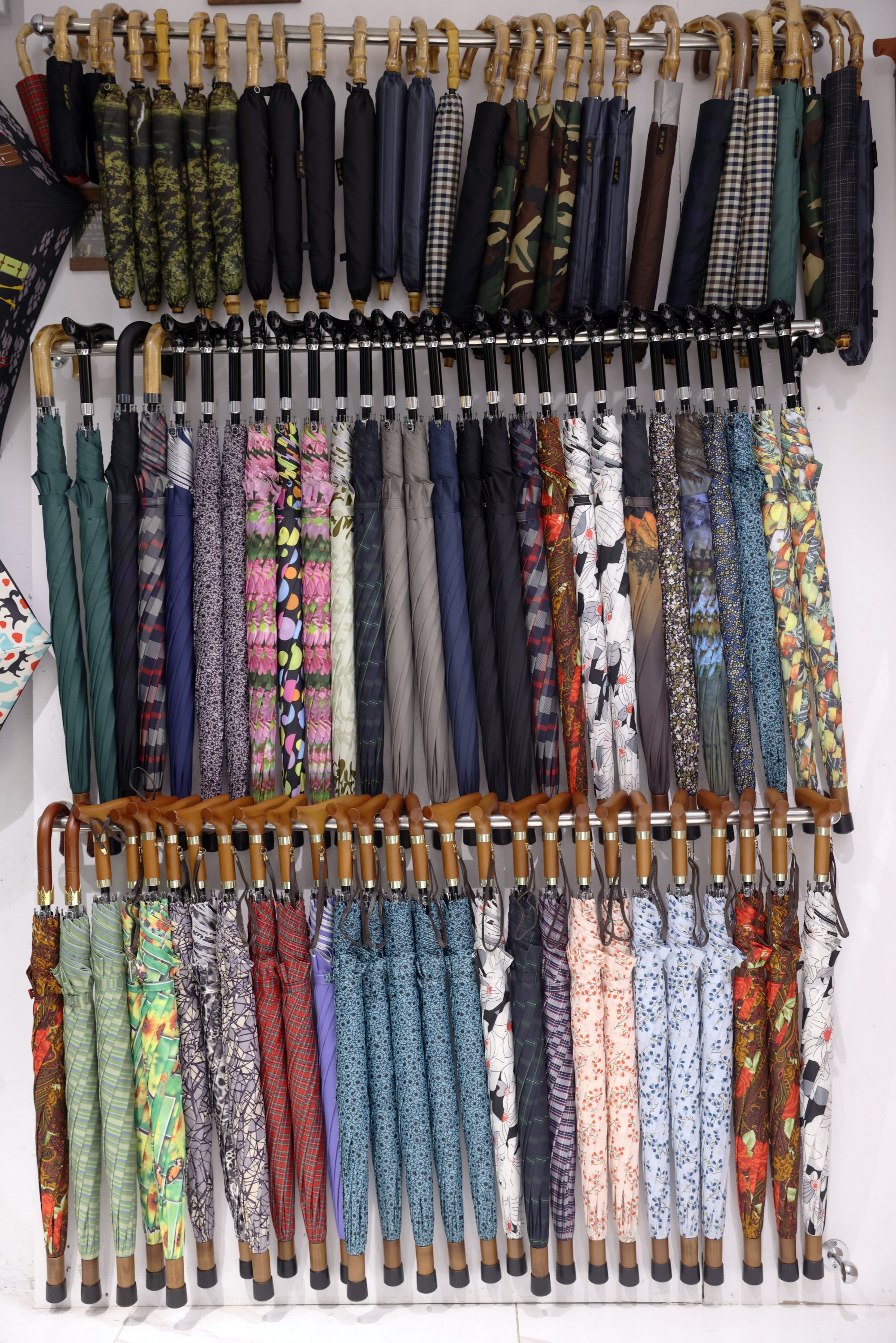
Customers are also welcome to bring in umbrellas from other makers for repair, for which they incur a small charge.
“We see a lot of umbrellas from the likes of Burberry, Prada and Alexander McQueen. Umbrellas are not these luxury brands’ speciality, so they would usually require repairs,” Leung says.
“We charge HK$90 for regular ones and HK$150 for the heavier, better-made European ones. It usually takes just a few days.”
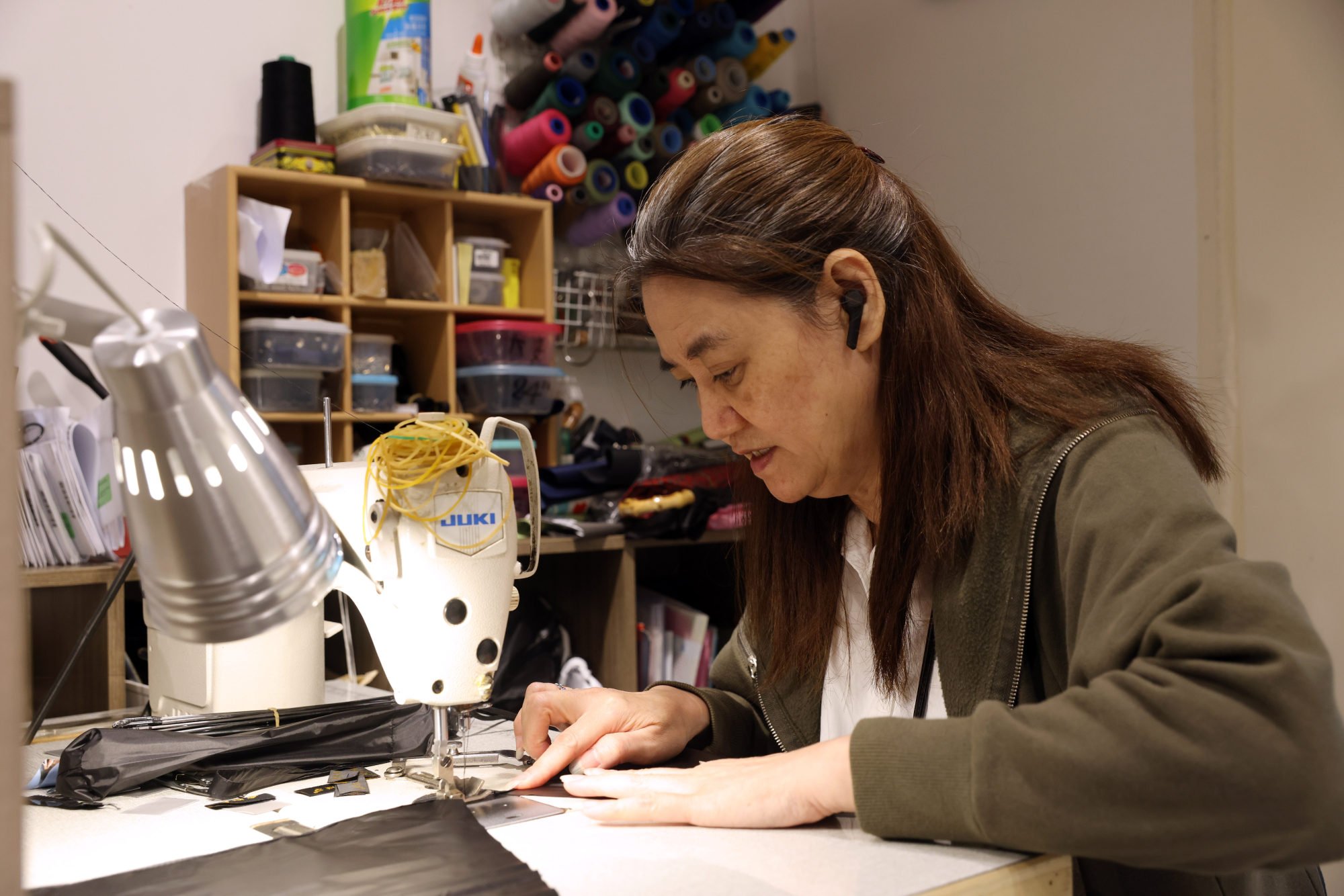
Leung considers his umbrellas to be at a mid-range price point.
“There are much cheaper options out there – you can get one for just HK$20, but those umbrellas won’t withstand a typhoon and will end up street trash, which is very bad for the environment.
“Our long-lasting umbrellas can be returned for repair and used again next time.”
In 1994, the company opened a flagship store in Sham Shui Po, which it retained for 29 years until 2023, when it moved to its current Tsim Sha Tsui location after the previous landlord raised the rent.
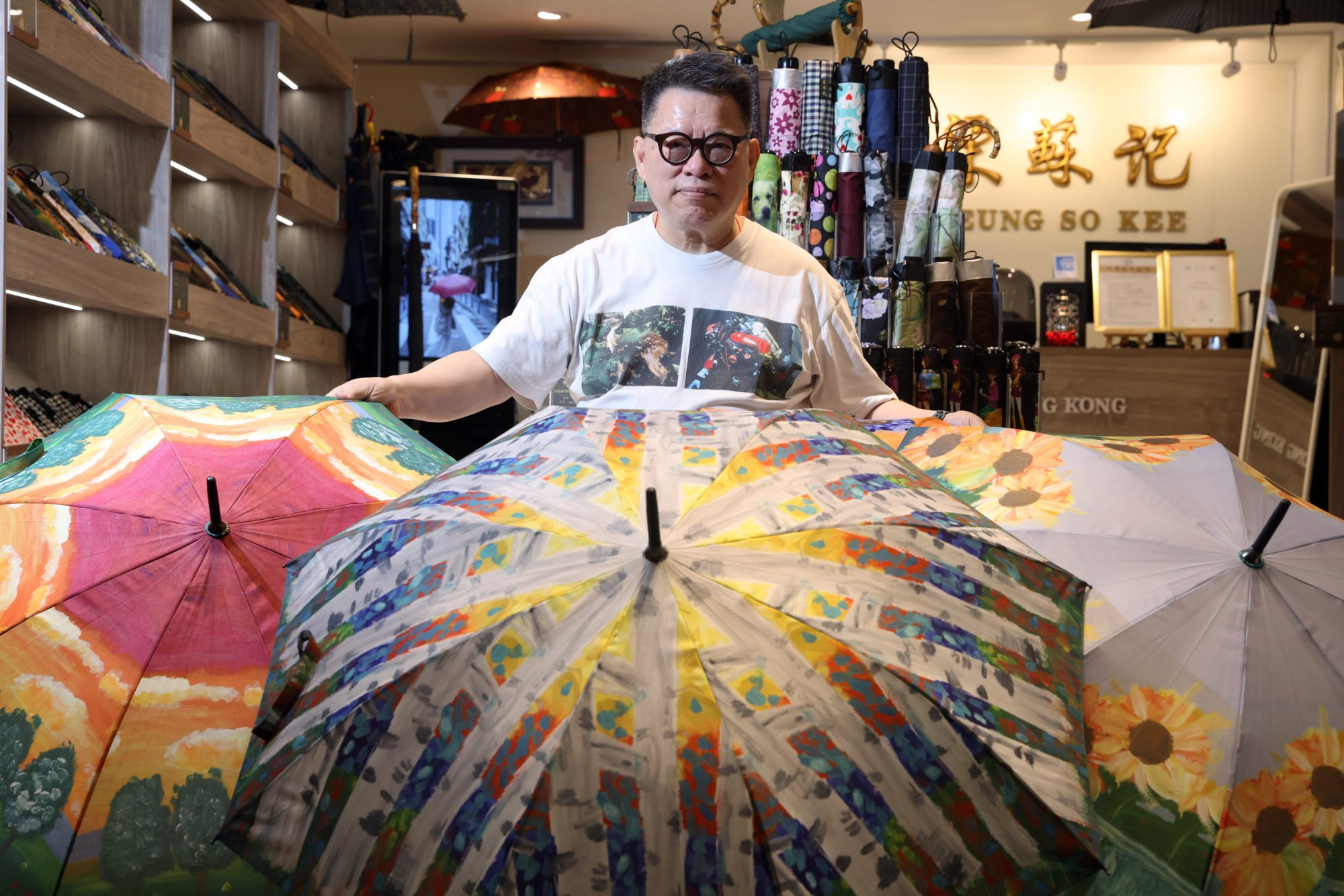
Leung says this is the fourth time the business has had a storefront on Nathan Road, the main thoroughfare coursing through the Kowloon peninsula. Recently, that shop, on Tsim Sha Tsui’s Park Lane Shoppers’ Boulevard, is getting a lot more attention from tourists.
“Just the other day, someone from either Shanghai or Beijing came and bought a mini fold umbrella – perhaps some Xiaohongshu influencer featured us,” Leung says, referring to a social media site popular in mainland China. “We get a lot of Singaporean customers too. Still, our clientele has been mostly locals and the elderly.”
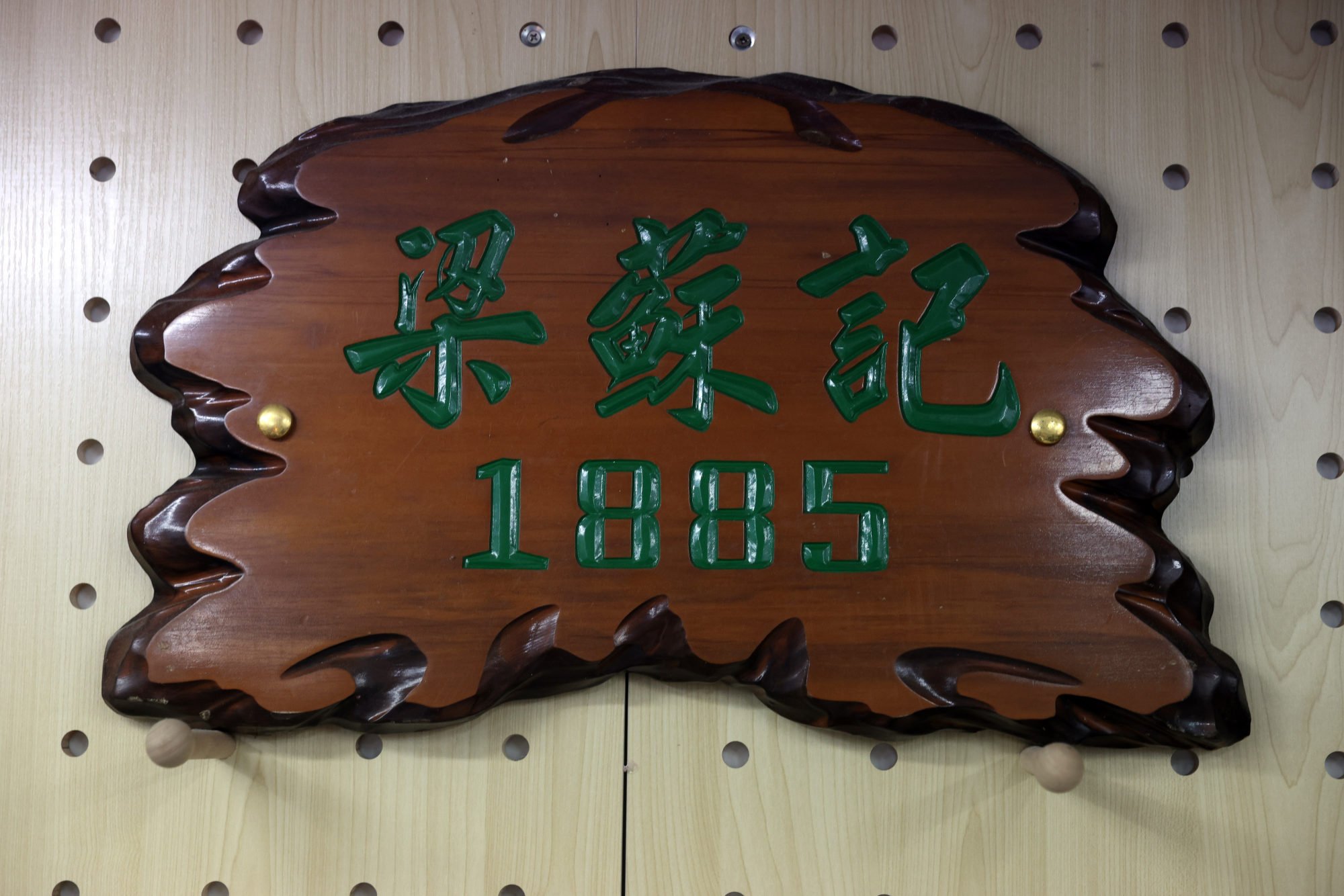
One of Leung So Kee’s feature items is its height-adjustable walking-stick umbrellas, designed with a rubber tip to aid in stable movement. This is not the only personalised aspect of its products.
“The good thing about hand-making umbrellas is it’s a small and customisable production,” Leung says. “At one point, we made plastic handles, since they’re cheaper and more approachable – very few makers used wood in the early days – but over time, not only do they break, they may even become sticky, as the handles sometimes melt in the heat.”
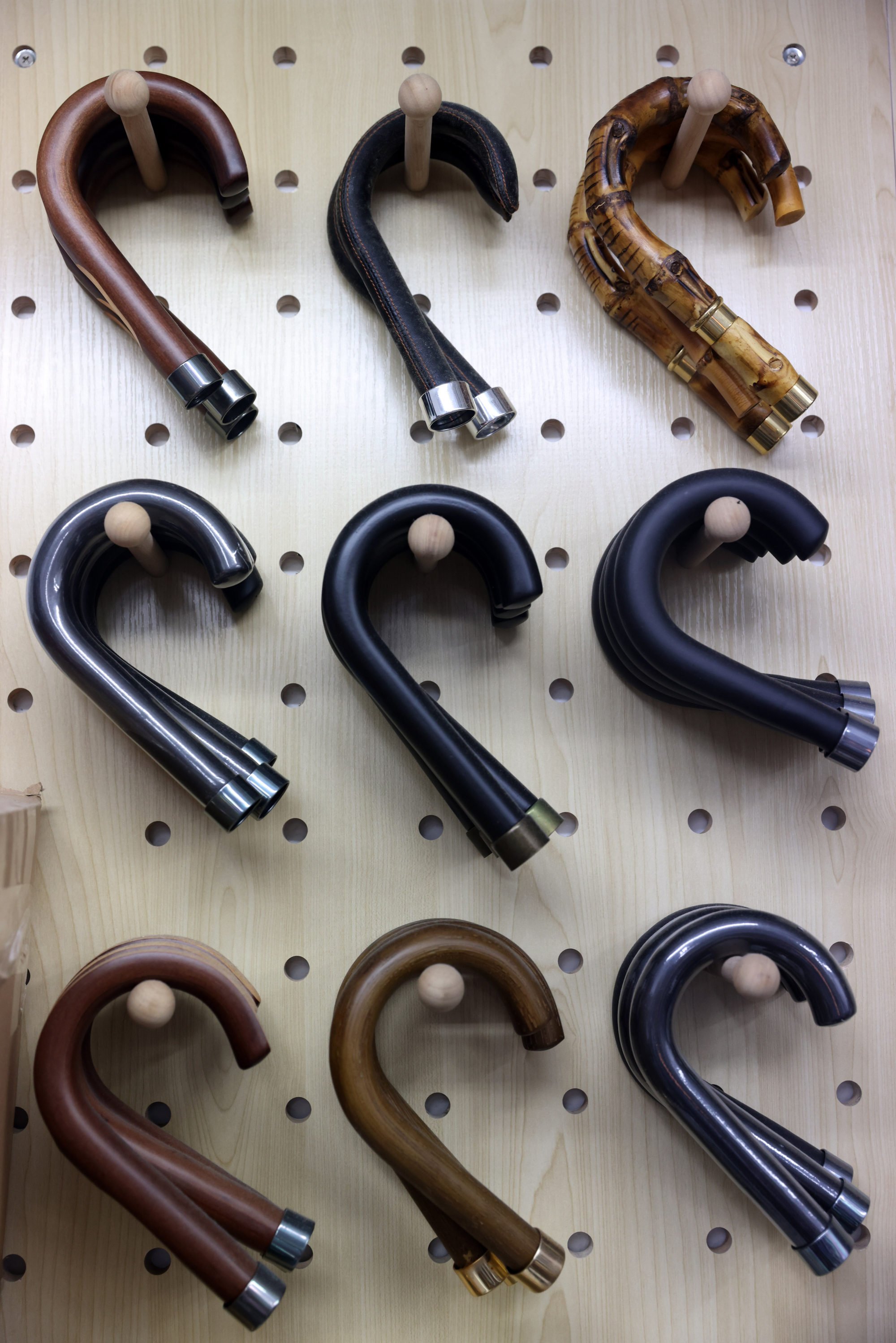
In recent years, Leung So Kee has only produced umbrellas with bamboo, wood and rattan handles. While these materials are indeed sturdier, it is to help the umbrellas better protect their users during bad weather, not so they can be used in fights, despite the attempts of one action film star.
In 1991, Jet Li Lianjie starred in Tsui Hark’s Once Upon a Time in China as the late Chinese martial artist and folk hero Wong Fei-hung, and famously weaponised Leung So Kee’s umbrellas in one fight scene.
“The props team initially bought two umbrellas from us, then came back and said they broke them. I asked, ‘Who’s the male lead?’ They said it was Jet Li, and I was like, ‘Of course! The umbrellas are not for kung fu.’
“They placed another order of 24 umbrellas for the Wong Fei-hung movie,” he laughs. “I heard they broke them all.”
In 1986, soon after its 100th anniversary, Leung So Kee closed all its stores on Hong Kong Island. The event inspired a 1988 novel by Raymond To Kwok-wai, which in turn inspired Clifton Ko Chi-Sum’s 1995 film The Umbrella Story, which was nominated for best screenplay at the 15th Hong Kong Film Awards. Both adaptations detailed Leung So Kee’s story and the stores’ closure.
The closures led many to falsely believe that Leung So Kee was shutting down for good, but it was only a misunderstanding. The stores on Kowloon side stayed open.
“My grandfather managed the Kowloon side, while his younger brother was in charge of business on Hong Kong Island,” Leung says.
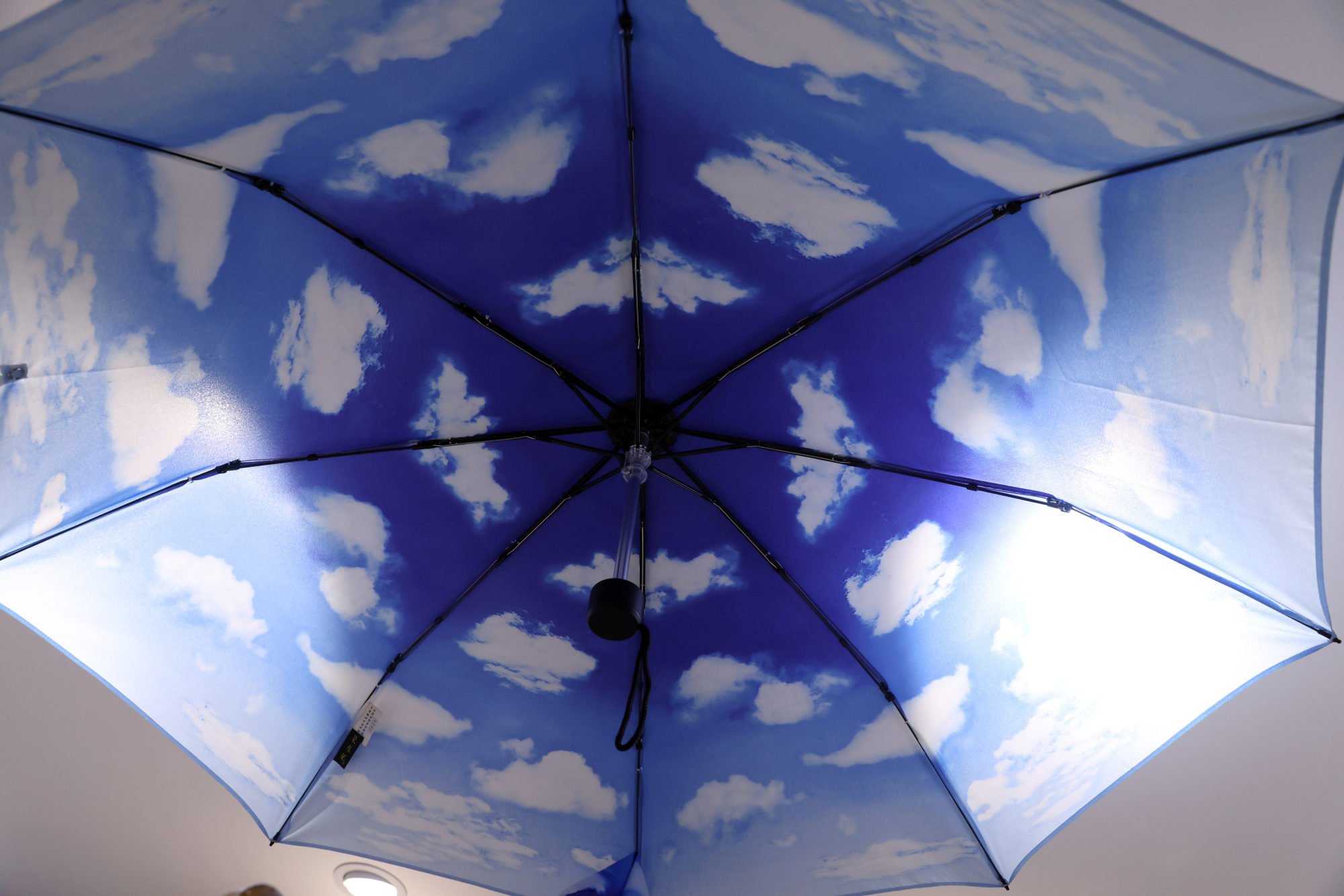
In 2020, as the Covid-19 pandemic took hold in Hong Kong, Leung So Kee launched its online shop and website. When it moved into its new, more spacious store on the Park Lane Shoppers’ Boulevard, it began hosting workshops in which participants could make their own umbrellas by hand-sewing fabric and attaching it to a frame.
The store also has an in-house laser machine for customers to etch names or chosen words onto the umbrella’s frame.
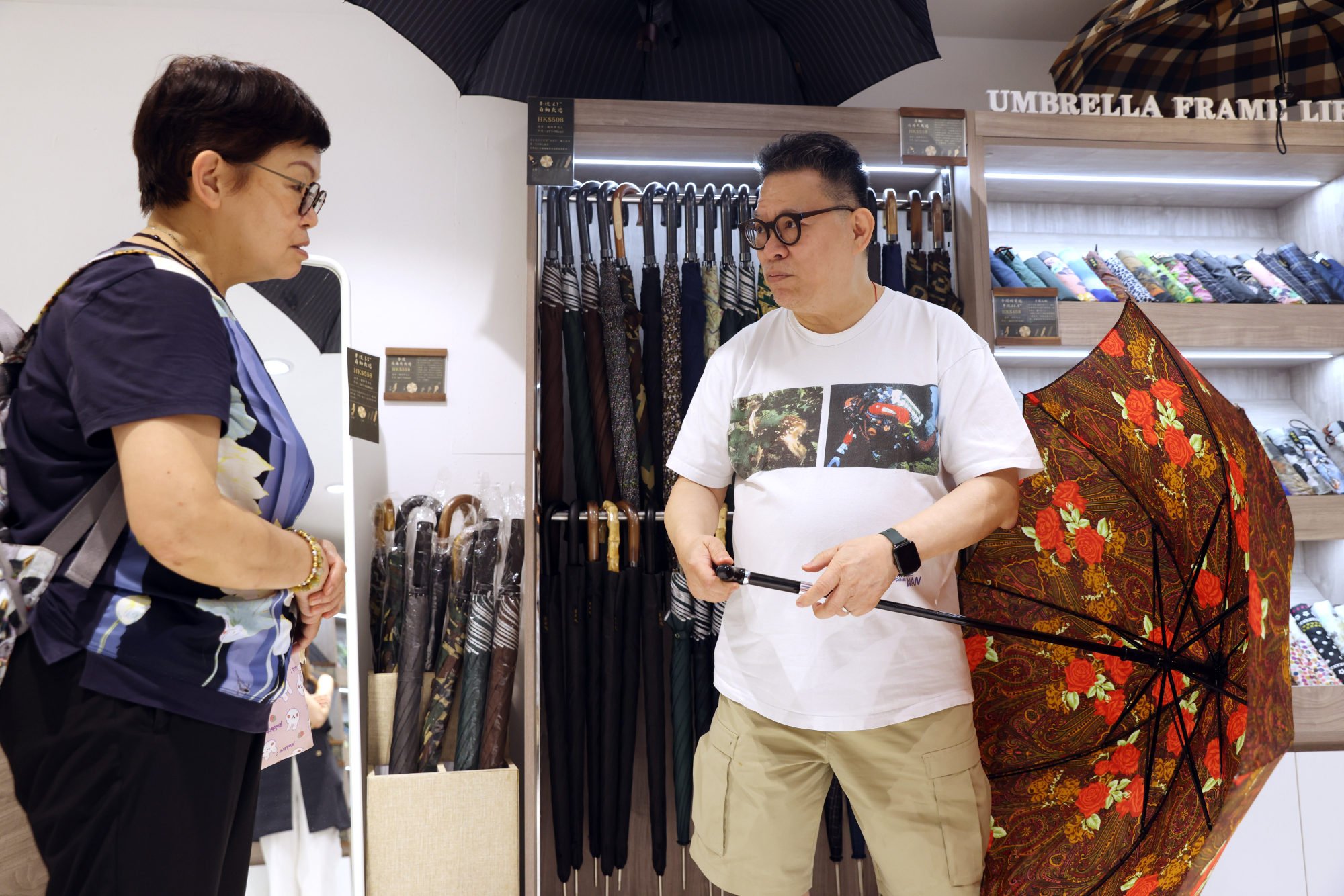
While the business is still alive and kicking, Leung admits the industry is declining, with little new blood coming in.
“Nowadays, very few young people want to join this industry. The process is complex and involves fabric, metal, plastic, wood, sewing machines. It’s tedious and intricate craftsmanship.”
Still, he adds: “I’m not too worried. We will persist.”

